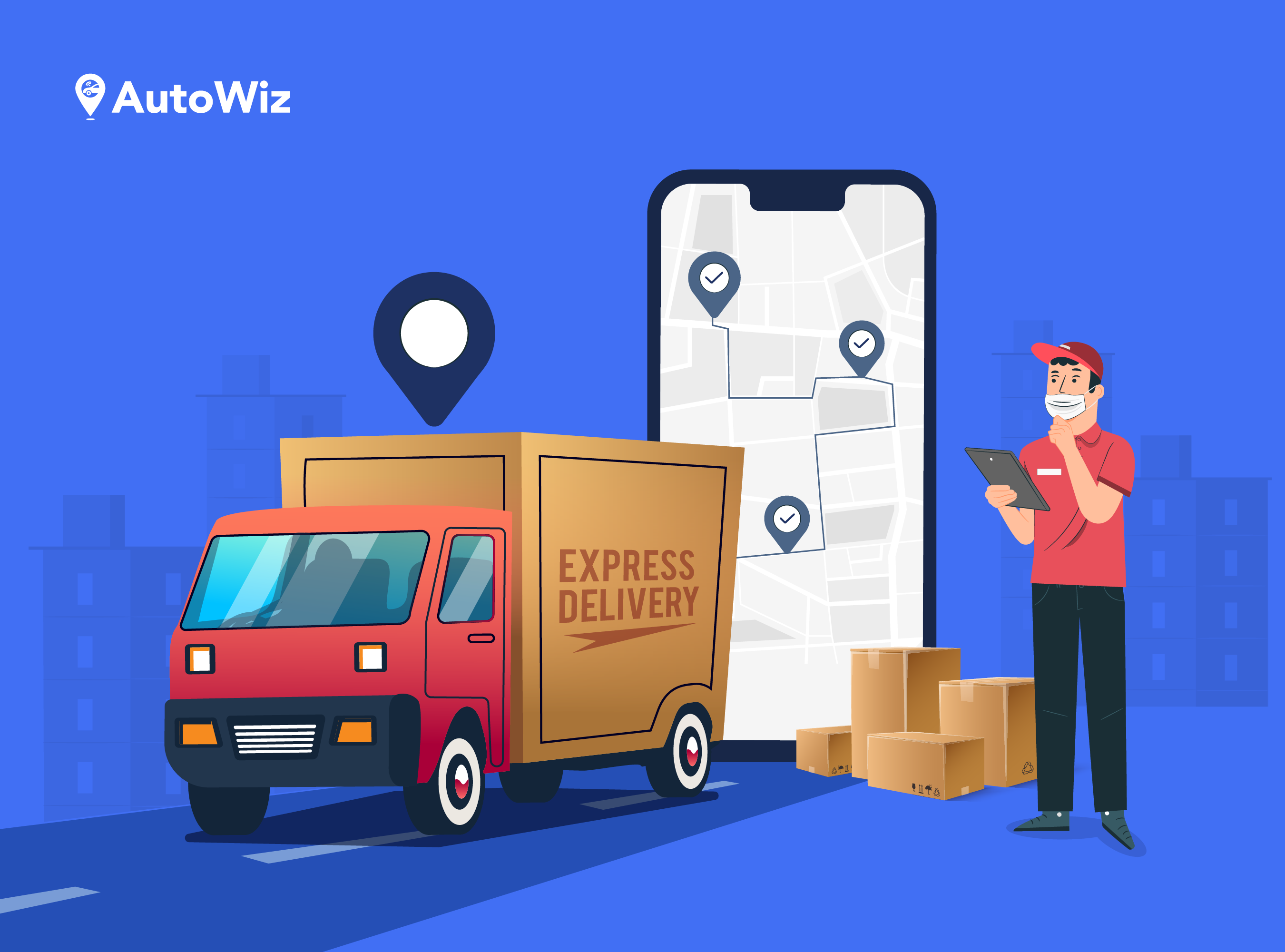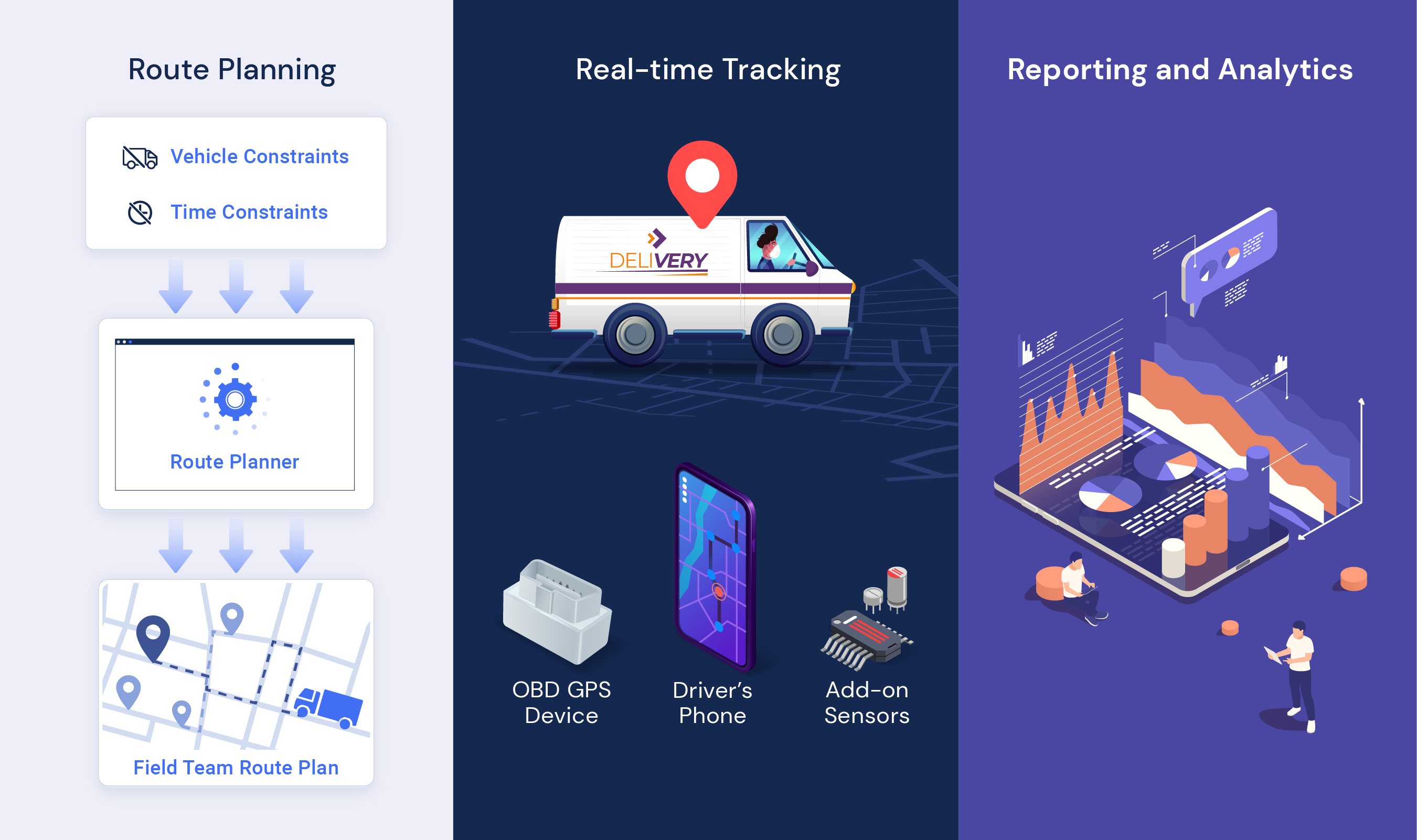The E-commerce boom over the last decades has boosted last-mile delivery operations, particularly during last year due to COVID restrictions on physical stores.
In 2019 the global logistics market for e-commerce was USD 752 billion. By 2026 it can reach USD 2630 billion, which implies a CAGR of 20%. Also, intra-city and last mile logistics growth is driving the growth in sales of Light Commercial Vehicles(LCVs). According to some estimates, the global LCV market will grow from USD 463 billion in 2020 to USD 786 billion in 2030.
Along with the fast paced growth, there are quite a few last-mile delivery challenges the operators need to face. Some of these include:
Cost Reduction Pressure – Often e-commerce companies prefer not to charge end customers for the shipment, and hence they look for delivery partners who can provide delivery at minimum cost.
Real-time visibility – Real-time visibility of delivery status and ETA is important to both operators and end customers.
Customer Availability– Unavailability of customers is a top cause for missing delivery timelines and increased costs. Having a predefined delivery window can minimize this issue, reduce cost and also increase customer satisfaction.
Last-minute adjustment – Due to the nature of the business, last-minute addition/ deletion of delivery is quite prevalent in last-mile delivery operations. Last-minute changes need to be incorporated and informed to delivery personnel.
Communication to the delivery persons – The schedule for the last-mile delivery is created right before the delivery operation starts. Communicating with all the delivery persons about their schedules within a short time is a significant challenge.
Delivery performance analysis – Due to competition, companies need to analyze delivery performance on a continuous basis and take necessary actions for the non-optimal delivery routes.
Specific Technology interventions can help delivery companies to overcome these challenges and have profitable last-mile delivery operations.
Route Optimization – Efficient and automated route planning and optimization software can help companies reduce the number of delivery vehicles and travel time/distance for each vehicle. The result is a reduction in the cost of vehicle hire, operations and cost of delivery persons.
The software should accommodate various real life routing and scheduling constraints related to time and vehicles. For example, delivery times, vehicle load capacity, vehicles for specific orders, inability to operate certain vehicles in certain locations,etc., should all be taken into account while arriving at the optimized schedule.
The software should also have an option to modify software output routes in an incremental fashion to accommodate last-minute changes.
Digital Communication to the Delivery Persons – The rapid penetration of smartphones has made it possible to remove paperwork in all kinds of business operations. Daily Schedule, Routing and delivery times sent automatically to the driver's mobile phone will increase operational efficiency and eliminate errors.
Real-time tracking of Delivery Operations – Smartphone-based tracking is the best option for businesses that do not own delivery vehicles and rent vehicles from the market based on daily usage. Smartphones come with GPS, and this helps monitor real-time delivery operations at a low cost. It assists the administration in taking action when delivery exceeds schedule and increases customer satisfaction by providing them with real-time visibility on ETA.
Since GPS consumes a significant amount of battery power, the software should be intelligent enough to understand when the person is moving or not and adjust the GPS sampling frequency. In addition, you cannot expect the driver to keep the application on at all times. Therefore, the tracking application should be able to operate in the background and detect itself at the start/ end of the journey.
Logistics companies who own vehicles or lease vehicles for the long term can use dedicated hardware-based tracking solutions. As all LCVs come with OBD (On-Board Diagnostics) port, those companies can use OBD GPS-based tracking solutions. In addition to regular tracking features such as real-time vehicle location, the solution can provide advanced features such as remote vehicle health monitoring, vehicle mileage, safe and economical driving behaviour, and so on.
Furthermore, for special delivery applications such as refrigerated vehicles, additional sensors such as temperature and humidity sensors can be linked with the telematics device in the vehicle in order to monitor the condition of the cargo.
Rich charts and reports – Analytics reports can help track the fleet utilization, cost trends, on-time statistics of specific routes and crew on an ongoing basis; and take the necessary steps to improve the efficiency of operations.
About AutoWiz’s Route Planning, Optimization and Real-time Delivery Tracking Solution:
AutoWiz Route Planning and Optimization Solution enables companies to plan and execute their field operations. Our solution applies to use cases across Logistics, Retail, Distribution, Last-mile delivery, Employee Transport and Sales/Service Field Force Management. Our smart technology helps in optimizing resource utilization, saving costs and improving customer satisfaction. Combined with AutoWiz Fleet Tracking, companies gain a comprehensive 360-degree view to plan, track and optimize their field activities.
AutoWiz Route Planning Solution consists of:
- Route Planning Software that generates optimized Routes and Schedules
- App for field Crew to view their schedule, navigate and update status
- Route Plan Tracking in AutoWiz Fleet Management that tracks the progress of all routes and tasks in real-time
Click here to schedule a free demo of the solution


